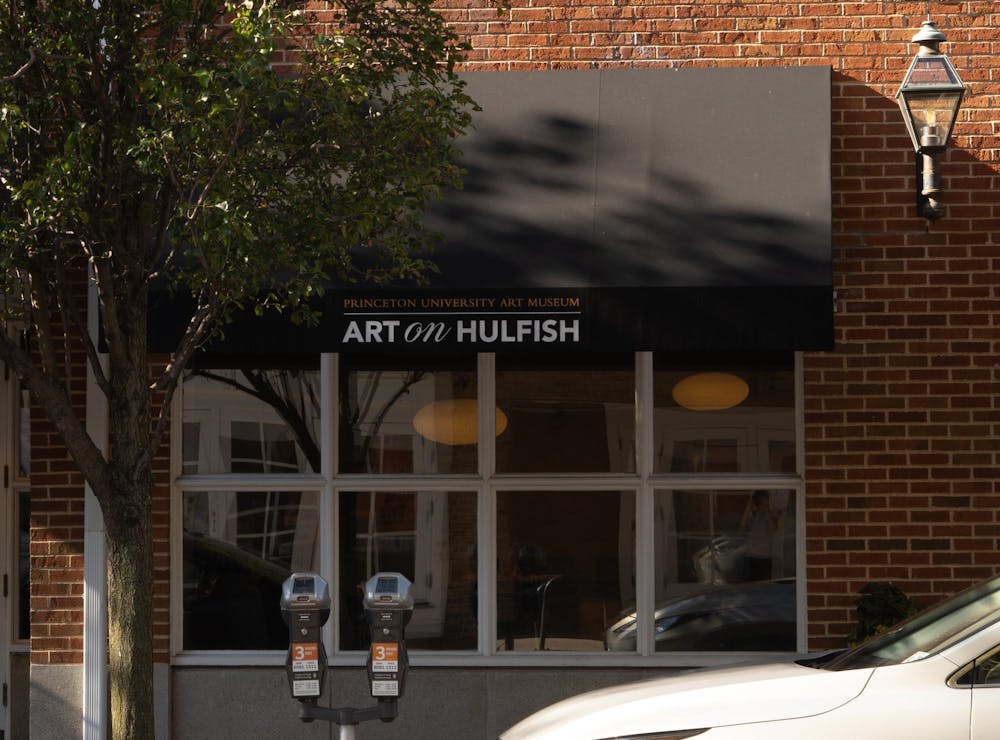The Hulfish Gallery is back with a new showcase planned by the Princeton University Art Museum. The current exhibition, ‘Art about Art: Contemporary Photographers Look at Old Master Paintings,’ curated by Ronni Baer and Peter H. Fox, boasts the works of contemporary artists, including Marcel Duchamp, Vik Muniz, Jeanette May, and more. The included works span a variety of styles and media but are thematically united in their attempt to shed new light on classical pieces.
The exhibition is playful on a whole. Visitors are immediately greeted with Marcel Duchamp’s and Philippe Halsman’s modern adaptations of the Mona Lisa. Duchamp’s piece minimally alters the original, but the few changes are noticeably irreverent and whimsical. For instance, Duchamp superimposed a mustache and goatee onto the original painting and scribbled a series of letters on the bottom of the piece that sound akin to a salacious French expression when voiced aloud. Explanatory blurbs accompany each of the pieces — the information on Duchamp’s piece describes his interest in “ready-made” pieces, or objects found in society that he minimally edits to call art, and his desire to criticize the bourgeoisie. His changes, therefore, are strategic and satiric. The Halsman piece takes an equally irreverent approach, but the alterations are more pronounced, allowing the viewers to compare the juxtaposed pieces easily. The Halsman portrait includes the eyes and pronounced facial hair of the surrealist artist Salvador Dalí, as Dalí appreciated Duchamp’s take on the original Mona Lisa. While I failed to recognize Dalí’s resemblance in my initial viewing of the painting, I was immediately struck by the piece’s piercing gaze.
The media becomes increasingly creative as viewers stroll through the exhibition. The pieces are grouped by modern adaptations of the same painting, so multiple pieces by the same artist may be spread across the gallery. However, due to the size of the space and the limited number of works, I could trace pieces by the same artist across different areas of the gallery, especially artists that use particularly unique media.
For example, I quickly recognized the connection between the works of Vik Muniz, who uses food as a medium. The first painting I discovered by Muniz was included in a room dedicated to Diego Velázquez’s “Las Meninas.” The room showcased several modern adaptations of the original piece, but I immediately gravitated to the unusual, dripping quality of Muniz’s work. Unable to decipher the unusual medium, I consulted the accompanying blurb, where I soon realized that he recreated the original “Las Meninas” in chocolate syrup to explore the romantic and commercial undertones of chocolate. Therefore, when I later saw the double image of Mona Lisa created from peanut butter and jelly, I remembered Muniz’s work across the gallery. In this piece, Muniz further complicates the idea of origin. Instead of taking inspiration from Da Vinci’s piece, Muniz harkens Andy Warhol’s duplicated silkscreen version of the original Mona Lisa — by using commercialized foods, Muniz provides further commentary on Warhol’s discussion of mass production and pop culture. However, I struggled to understand Muniz’s provenance and ownership in this complex blend of both originality and borrowing. The artist’s statement that “a copy of a copy is always an original thing” only further muddled my questions raised by the complicated tradition of artists that support his work.
Muniz is not the only artist in the gallery who shatters the limitations of media. Ori Gersht, for instance, literally shatters the traditional still life. He freezes flowers in liquid nitrogen, obliterates them with imperceptible explosives, and photographs the scene as it detonates. The result is a striking chaos where shards of white and red billow outward toward the edges of the frame, attempting to escape the bounds of the photograph. On the other hand, Jeanette May is more creative in her material than her process. To challenge traditional Dutch vanitas paintings, she finds beauty in modern “junk,” photographing a scene that includes a glittering disco ball and several obsolete technologies. Her work is nostalgic and evokes a far nearer past than the Dutch paintings that she references.
Other artists challenge the classics thematically. The Japanese artist Yasumasa Morimura recreates the Flemish painter Jan Van Eyck’s self-portrait by replacing Van Eyck with himself. In other work, he inserts himself into a version of Las Meninas — his work poses questions about Western influence on the artistic canon historically and reimagines classics in a more inclusive manner.
Hulfish’s new exhibition is a creative showcase that challenges classical art, explores the expansive variety of media available in modernity, and provides a playful, whimsical group of pieces that are both visually and intellectually striking. You can visit the gallery anytime until Nov. 5 to see the exhibit.
Isabella Dail is a sophomore and an associate editor for The Prospect at the ‘Prince.’ She can be reached at id7289@princeton.edu.
Please send any corrections to corrections[at]dailyprincetonian.com.





